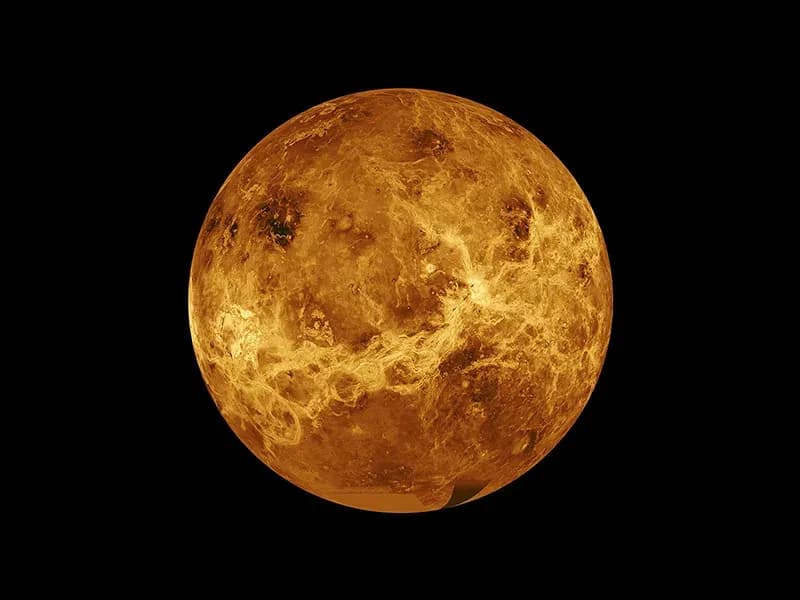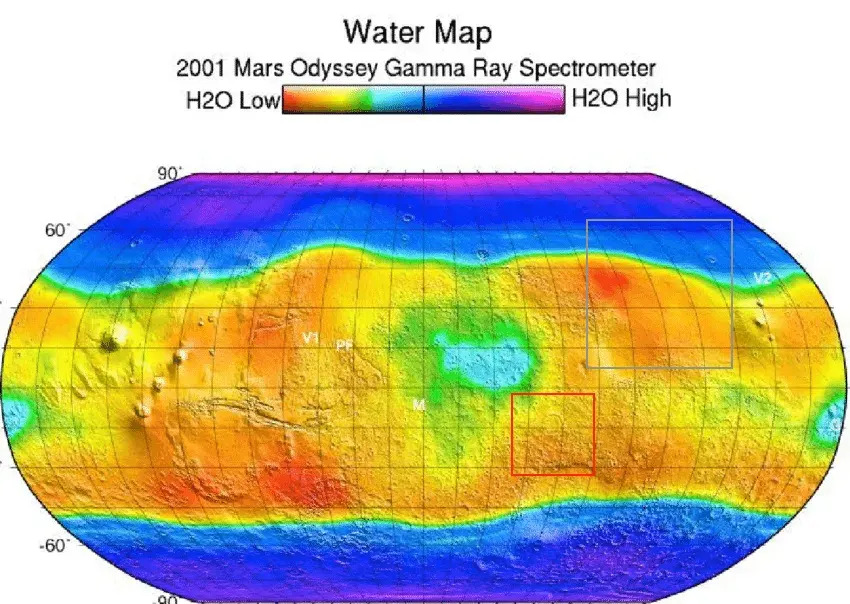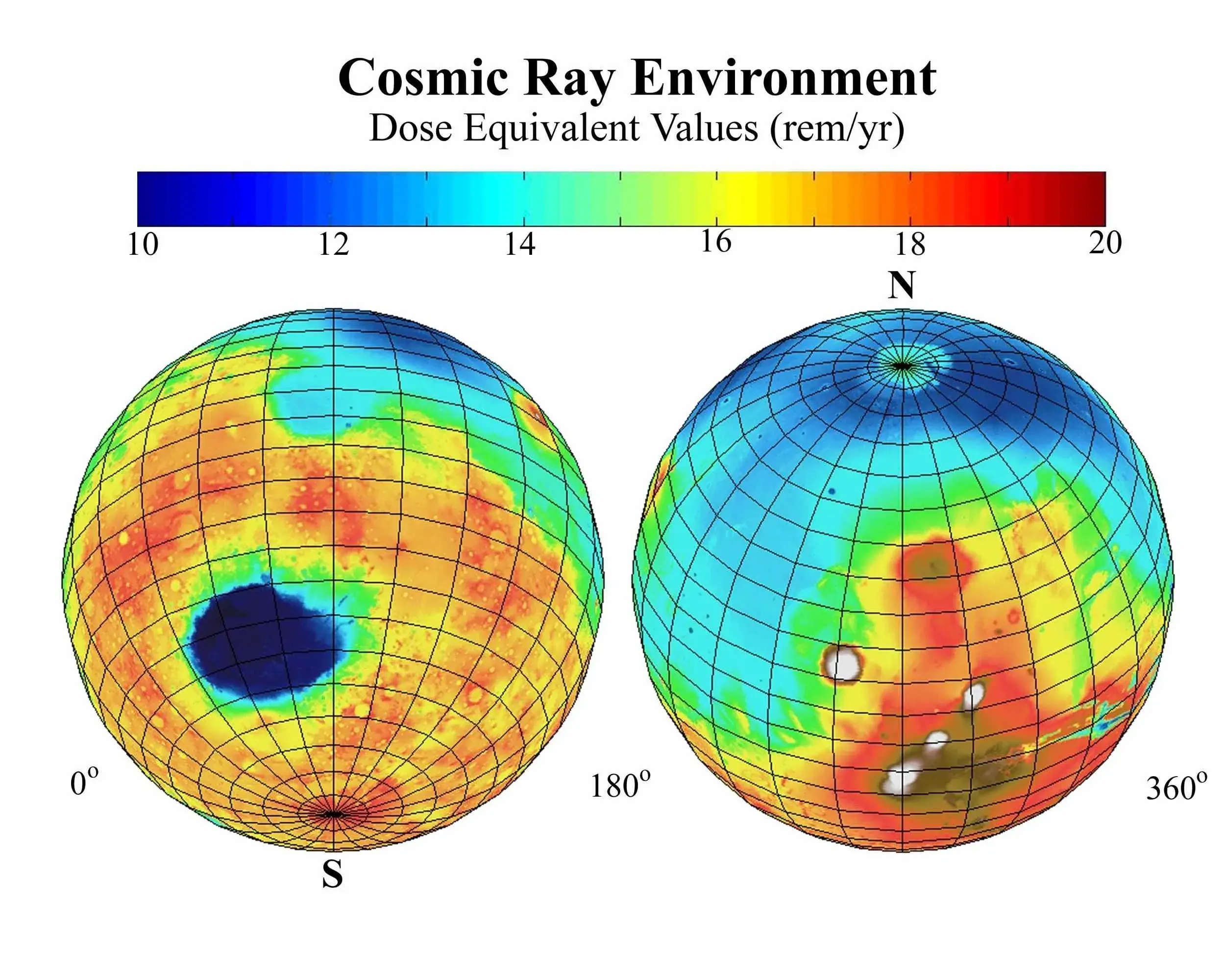Why Mars?
We have decided Mars for our location to land at. This was chosen through a process of elimination. Our original contenders were Mars, Venus, Titan and Promixa Centauri b as well as other exoplanets. After considering the advantages and disadvantages of settling on each planet, we have decided that Mars would be the most ideal out of all.
Promixa Centauri B & Other Exoplanets
Immediately, we know that we can not reach Promixa Centauri b because it is too far away around 4.2 light years away (Nasa, 2019) and since we cannot travel at distances close to light, a journey to any exoplanet, even with the fastest rocket speed every accomplished, would take around 7 million years.

Venus
The next planet that we looked at is Venus and it is not too far away. However, the pressure of Venus would be too strong for any human to handle being 92 bar or 1,350 psi (The planetary society, 2023). It is unknown what exactly the breaking point for humans is but 1,350 psi would definitely cause some damages on the human body. Furthermore, Venus has very high temperatures, which human could not possibly survive under.

Titan
Titian is the final planet which we decided that is not possible for human to reach or survive on. The biggest problem is the 2 year time it takes to reach even using nuclear rockets (Popular Mechanics,2023) meaning that we would have to prepare enough food and water supply, fuel supply. Along with other physical and mental health issues, settling or even reaching Titan would not be sustainable.

Problems with Mars
Although Mars might be the best option out of all planets/moons considered above, Mars is still not a place completely identical to Earth enough for human to survive on. These problems will be addressed in the base section. Briefly:
- Its gravity is only 38% of Earth's gravity
- Can cause issues specified in Ship & Journey
- Toxic Dust
- The dust is toxic because "it contains fine-grained silicate minerals, which are common on Mars" (Jaggard, 2013)
- High Solar Radiation
- Mars's solar radiation is "24-30 rads or 240-300 mSv per year. This is about 40-50 times the average on Earth." (Marspedia, 2022)
Where on Mars?
Location
As our final location for our base, we chose Utopia Basin, as shown in Figure 4. Specifically, we will locate our base on the East Side, close to and North of Elysium Mons.

Reasons
This was for two main reasons:
- Low Dust Storm Frequency (Figure 4)
- Close Proximity to Potential Water Ice (Figure 5)
Although there were other reasons to consider, for us, dust storms was the major issue.


However, also shown in Figure 5, the immediate location of our base will most likely not have water (ice). Therefore, we will set up our base around the longitude of Elysium Mons, and send missions North to collect water ice. We decided not to settle at a location that is higher, due to the much higher frequency of dust storms, which is a much bigger concern than the level of water ice.
Alternatives
The main other alternative was Hellas Basin, a large deep basin. Although it had slightly higher gravity and slightly lower solar radiation, its large dust storm frequency, as shown in Figure 4, ruled it out as our initial location.
Other Considerations
Other considerations that were taken into account can be seen in the footnotes.
What About Terraforming?
Initially, we declined the idea of terraforming due the high cost of time and resource. However, there are other problems with terraforming:
- Potential destruction of Mars Culture, Fossils and History (Walkowicz 2018)
- Not enough CO 2 reserves on Mars for such an endeavour (Jakosky & Edwards 2018)
However, after the potential for humans to study Mars, after arriving, there is the potential for the terraforming of Mars. However, current technology does not allow us to do this in a feasible and respectful manner - the time and resource cost will be too high, and there is the potential for terraforming to incentivise us to continue destroying Earth as we are now, due to the thought that 'we can just change another planet to Earth!'.
Footnotes
Other Considerations
The three main other considerations were temperature, pressure and solar radiation exposure. Pressure was found to be correlated to height, with the low areas of Hellas having slightly higher pressure, but the difference is not noticeable. Temperature maps were found, but specific locations could not be read, and as shown in Extras 1 below, the solar radiation exposure of Hellas and Utopia are very similar.
